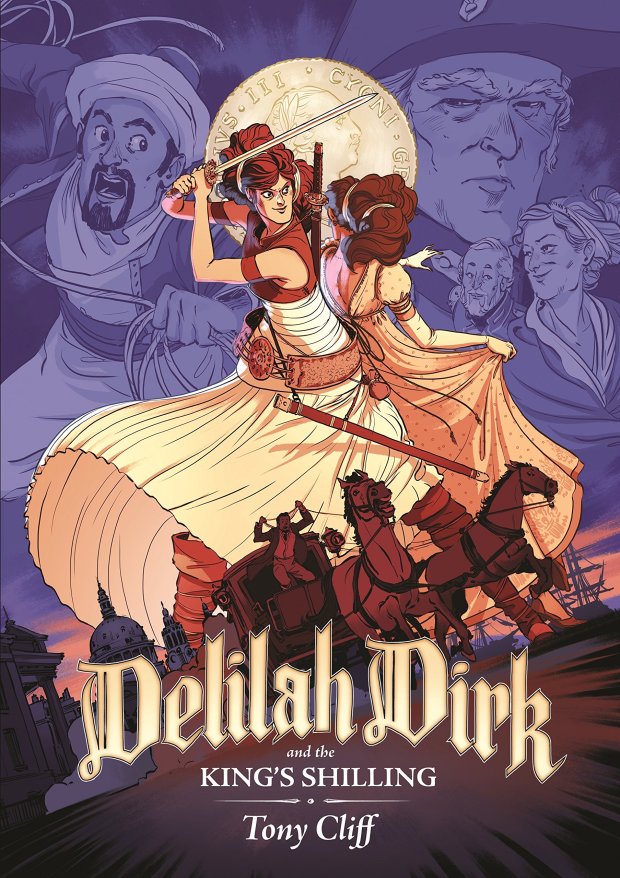by Tony Cliff
volume reviews: one | two
I couldn’t wait any longer and picked up the second installment of Tony Cliff’s Delilah Dirk series! The book picks up several years (!) after Selim and Delilah’s meeting. While on their adventures, Selim dreams of visiting London; Delilah is reluctant, but is pulled into returning home when they encounter Major Merrick of the British army, who frames Delilah for espionage.
Delilah and Selim are delightful characters; they balance each other out very well, and while there are hints of romance it doesn’t feel like a typical “will they, won’t they” romance – though I’m expecting it eventually, Cliff is clearly focused on the adventure here. And this volume we get to know one of Delilah’s weaknesses: fixating on her reputation as Delilah Dirk. That eventually risks her relationship with Selim, and they emerge with some good character development.
But Cliff still keeps us at arm’s length from getting to know Delilah. There are several emotional moments, where the perspective suddenly switches to Selim’s limited perspective, losing an opportunity for the reader to get to know Delilah during a vulnerable moment, or simply her experience of returning home. It’s unclear if this is because it’s meant to be Selim’s story (contrary to the series’ title), or if Cliff simply chooses to maintain some mystery around Delilah.
Unfortunately, the story fell a little flat compared to the first volume. Merrick is such a boring villain and it takes a while for all the pieces to come together. (Frankly, I’m curious when Delilah’s nemesis will be another woman.) The story dragged a bit in the middle; things felt much slower compared to the gleeful, almost frantic romp of the first story. There also weren’t any other futuristic elements to the world, which was disappointing.
Even with those disappointments, Delilah Dirk is still worth the read, and Cliff’s art is still top-notch. There is a rough but expressive and kinetic feel to his art style. His action scenes communicate excitement well and feel like storyboards. While Spain had far more visual interest than London, there were also a lot of lush details to banquet halls, dresses, and horse drawn carriages. (I can’t say what’s accurate or not though, I have no expertise on that.) The coloring is also done very well and I feel immersed in Dirk’s world, even though it was a bit of a let down. I’m still looking forward to volume three.






